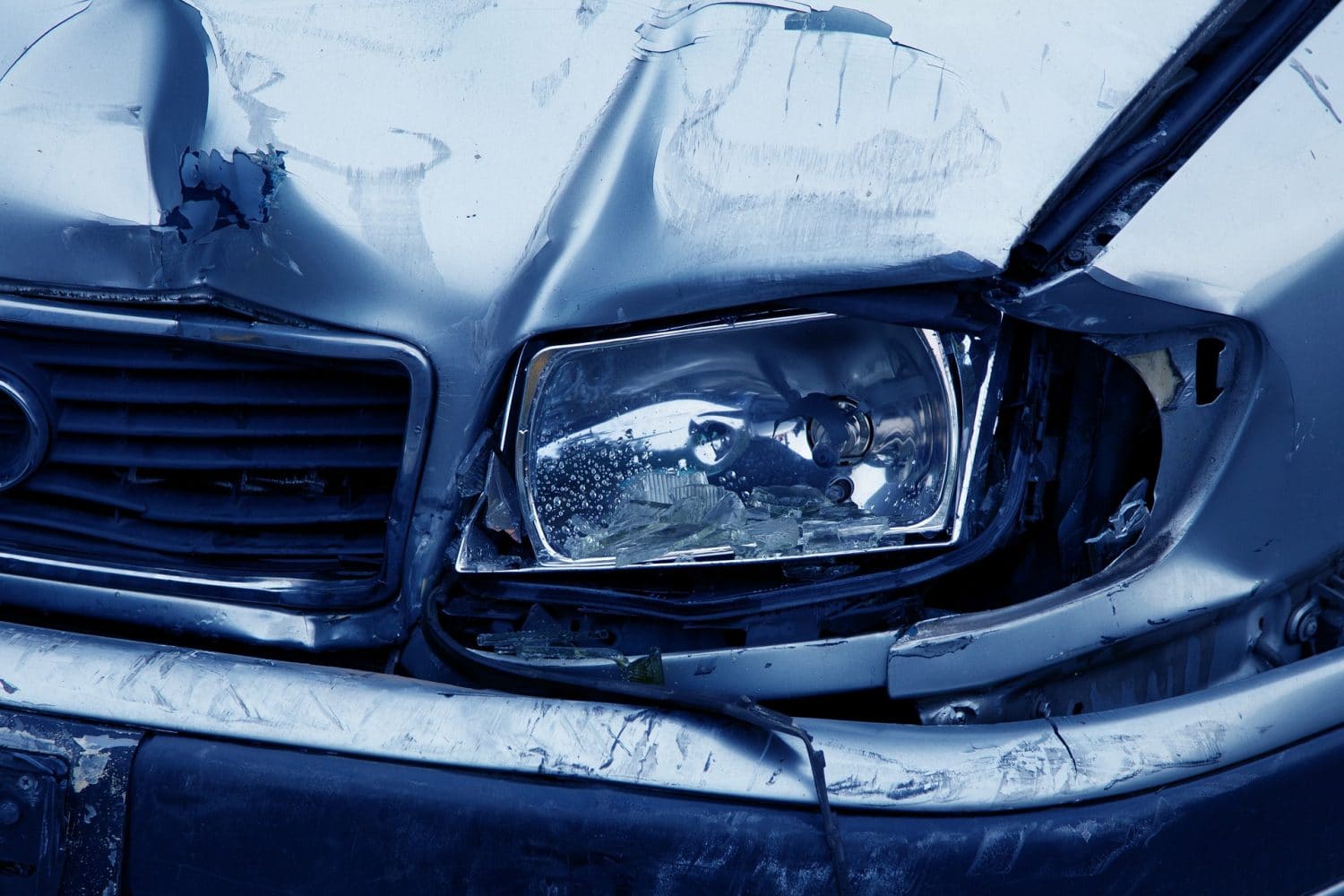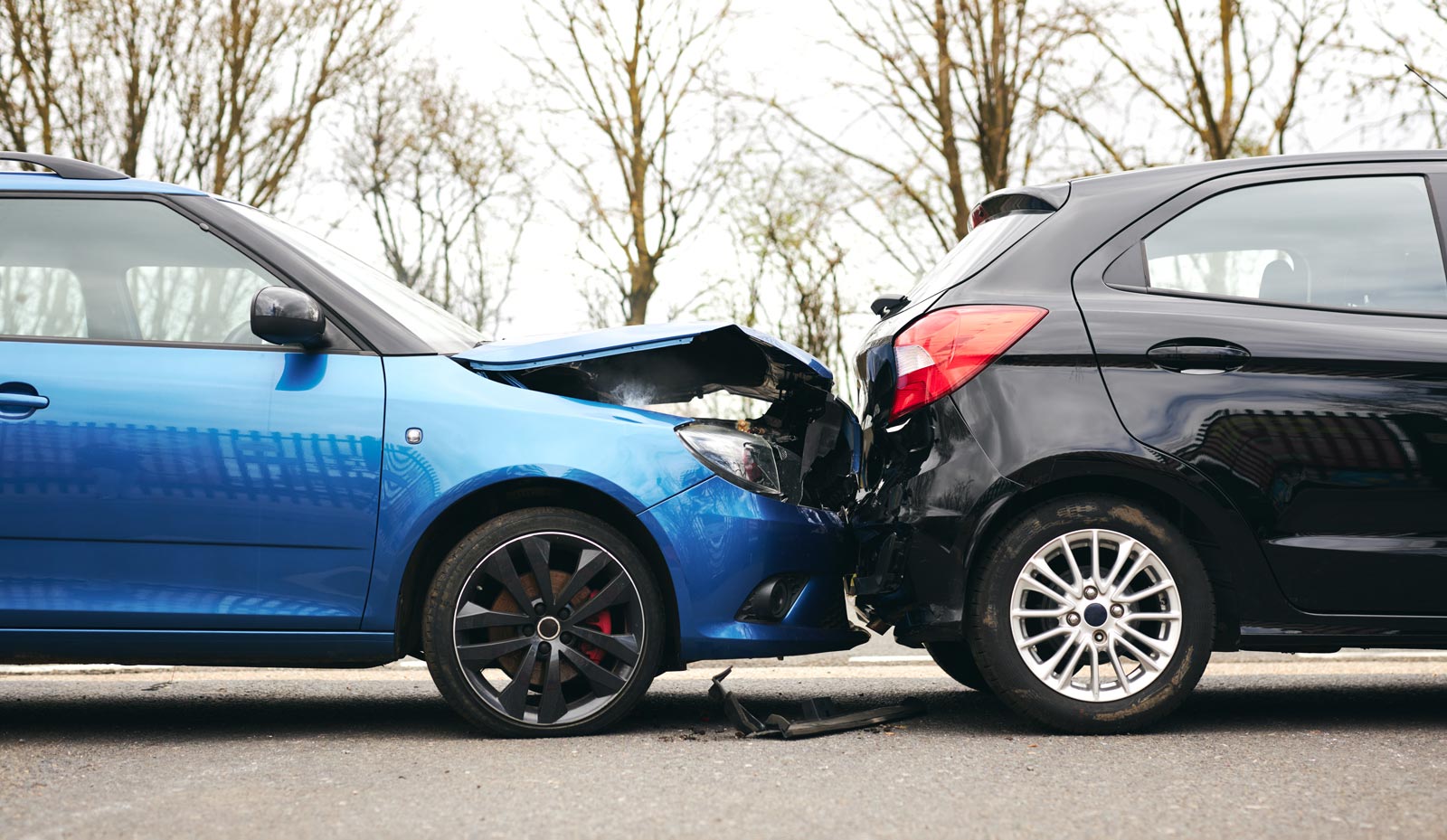Too many car accident causes involve common, preventable risk factors like cell phone use, sloppy vehicle maintenance, and driver inexperience. In fact, car crashes are among the leading causes of preventable fatalities and injuries in the U.S. This is especially true among people ages 16–25, who die more often due to traffic crashes than from any other preventable cause.
Now, let’s explore five common causes of car crashes and how our car accident lawyers hold people accountable for their wrongdoing.
1. Distracted Driving
Whether drivers are texting, looking at their GPS, eating a sandwich, or chatting with a friend, it pulls their attention away from the road, causing a shocking number of wrecks. In 2019 alone, the Texas Department of Transportation reported the following data:
- Cell phone use led to at least 3,842 car wrecks.
- Distraction in the vehicle contributed to roughly 12,903 crashes.
These numbers are probably much too low—traffic safety experts believe that distracted driving is significantly underreported.
It can be difficult to prove distracted driving. After all, very few people will admit that they took their eye off the road to read a social media post. However, if a lawyer acts quickly, they can uncover texting while driving and other distractions.
For example, Crosley Law represented Lee, a motorcyclist who was seriously injured when a car hit his bike. We suspected that the young driver was using their phone at the time of the wreck, so our personal injury lawyers immediately demanded copies of the driver’s cell phone data. Eventually, we negotiated a $750,000 settlement for Lee and his family.
Other ties, we have used a commercial vehicle’s onboard tracking system and dashcam to prove a driver’s negligence.
If you believe your car accident was caused by distracted driving, you need to act quickly. Over time, cell phone records, dashcam footage, and other data can disappear—making it difficult to prove the other driver’s distraction.
RELATED: Lee’s Story: Motorcyclist Receives Settlement in Distracted Teen Driver Crash
2. Defective Vehicles and Parts
Between 2005 and 2007, the NHTSA estimates that vehicle problems caused 44,000 crashes in the United States. While some of these wrecks involved shoddy maintenance (which we’ll discuss later), many were due to defective or dangerous auto parts and systems.
Auto manufacturers typically issue vehicle recalls when they identify a vehicle safety issue. These recalls are relatively common. In 2019, 53.1 million vehicles were recalled in the United States, and that statistic has risen almost steadily since 2000.
The NHTSA estimates that at any given time, more than 50 million vehicles with unresolved safety recalls are on U.S. roads. While high-profile defective products, like Takata airbags and Firestone tires, get a lot of attention, most are relatively subtle. A taillight might not work. Brakes might lock up unexpectedly. A seatbelt could detach during an impact.
These less-publicized defects can cause life-changing injuries and make the parts’ manufacturers, distributors, and retailers financially responsible for the victims’ losses.
For our client, Priscilla, that life-changing injury came in the form of a detached retina and permanent vision impairment. When another driver ran a red light and plowed into her car, Priscilla’s airbag deployed improperly and severely injured her eye. Despite quick treatment and surgery, she will forever have a blind spot in the middle of her vision and deal with a heightened risk of falls and anxiety because of it. While the settlement we won for Priscilla helps, the defective airbag has changed her life forever.
If your traffic accident was caused by defective or recalled auto parts, you must retain the parts in question. With the help of your lawyer, send a preservation letter to the insurance company and at-fault driver right away. This will ensure that your attorney’s team of expert engineers, investigators, and accident reconstruction specialists can examine the parts and determine whether they contributed to your injuries.
3. Poor Auto Maintenance
When a driver ignores their grinding brakes, broken taillights, or balding tires, they could be putting others at risk. While all motorists should regularly maintain their vehicles, commercial drives are held to a higher standard. DOT (Department of Transportation) rules require trucking companies and other commercial operators to regularly inspect their fleet and perform routine maintenance.
Our client, Jill P., lost her husband Michael because of a poorly maintained semi-truck. The truck had broken down on an interstate and was partially blocking an entrance ramp. Michael smashed into the back of the truck, likely dying on impact. We performed an extensive investigation that ultimately revealed poor maintenance and negligence, securing a settlement that will help support Jill and their children.
As with any case involving commercial drivers, your lawyer should preserve the maintenance logs and physical evidence immediately to lock down any evidence of negligent maintenance. If you’re dealing with a passenger vehicle, your attorney will probably want to inspect that poorly maintained vehicle before it’s repaired or totaled.
RELATED: Who’s Responsible for Negligent Vehicle Maintenance?
4. Nighttime and Drowsy Driving
Driver fatigue or drowsy driving resulted in at least 9,198 Texas crashes in 2019. There are several reasons why driving at night is more dangerous than daytime driving. First, visibility is reduced, due to the lack of light.
According to the National Safety Council, nighttime visibility for most cars is limited to 500 feet ahead with the high-beam headlights on, and only 250 feet with the normal headlights on. Color recognition, depth perception, and peripheral vision are all compromised in low light, and especially so among older adults. This means that many drivers are already at a disadvantage—even if they aren’t otherwise distracted or impaired. (Drunk driving is also more common at night.)
In addition, drivers are more likely to be sleepy at night, which can slow their reaction times and inhibit judgement. Drowsy driving is a serious and widespread problem. In a survey conducted by the National Sleep Foundation, almost 40 percent of drivers admitted to having fallen asleep at the wheel.
Commercial drivers and long-haul truckers are especially vulnerable to drowsy driving. Sometimes truckers feel pressured to drive through their drowsiness to meet deadlines, even though most commercial drivers must follow federal “hours of service” rules—if they stay on the road too long without breaks, they are in violation.
While it was relatively easy to fraudulently change handwritten logbooks to hide “hours of service” violations, most modern trucks now have electronic logbooks. These systems are harder to cheat—although it is still possible.
Preserving the driver logbooks is vital to proving misconduct or negligence. However, if you don’t act quickly, you might lose this valuable information. (Trucking companies only have to keep their logbooks for six months. After that, they can destroy them.)
Your attorney should also investigate whether coercion from the trucking company had anything to do with the crash.
Our client Jerry M. was a victim of commercial driver fatigue. In the middle of the night, he was hit by a big rig heading the wrong way on the highway and wound up with significant physical and mental injuries. After months of research and discussions with the country’s leading brain specialists, we were able to secure the compensation Jerry deserved.
RELATED ARTICLE: Drowsy Driving Accidents Are On the Rise
5. Inexperienced and Undertrained Drivers
When someone is new to driving or unfamiliar with Texas’ roads, they are more likely to cause an accident. Whether they are ignoring the speed limit or making unexpected lane changes, these drivers increase everyone’s chance of a crash.
Young drivers are prone to collisions. According to the NSC, teen drivers perform worse than adult drivers at everything from judging speeds and gaps in traffic to eliminating distractions and bad habits. Half of all teens will be involved in road accidents before graduating high school.
However, teenagers aren’t the only novice drivers. Some trucking companies do not provide proper training to their drivers or allow chronically negligent drivers to stay on the road. The latter played a part in the death of our client Jane’s daughter, Amanda.
Amanda was turning left when a tractor-trailer smashed into her car. Only when Jane and our team pressed for more detail did we learn that the truck driver lied about the accident and had a history of dishonesty and negligent driving. Even worse, his employer knew of the trucker’s reckless driving record and did nothing to protect the public. Our injury lawyers helped hold both the driver and the company accountable and negotiated a fair settlement for Jane.
RELATED: A Grieving Mother Clears Her Daughter’s Name: Amanda and Jane’s Story
Crosley Law: Committed to Helping Victims of Negligent Driving in San Antonio
No matter how much effort you put into being a safe driver, you can’t control other people’s behavior, which means you can never eliminate your risk for a car crash.
At Crosley Law, we work with car accident victims to identify distracted and reckless drivers, as well as issues like defective parts and poor maintenance, and we fight to secure fair compensation for their injuries. Let us deal with the insurance company so that you can focus on healing.
If you or a loved one has been injured by someone else’s negligent actions and you believe overlooked car accident causes are to blame, please contact us by calling 210-LAW-3000 | 210-529-3000 or through our simple online contact form. We’ll be glad to offer a free consultation to discuss your personal injury case and inform you about your legal options.
References
Crash contributing factors. (2019). Texas Department of Transportation. Retrieved from https://ftp.txdot.gov/pub/txdot-info/trf/crash_statistics/2019/21.pdf
Critical Reasons for Crashes Investigated in the National Motor Vehicle Crash Causation Survey. (2015, February). National Highway Traffic Safety Administration. Retrieved from https://crashstats.nhtsa.dot.gov/Api/Public/ViewPublication/812115
Distracted driving. (n.d.). National Highway Traffic Safety Administration. Retrieved from https://www.nhtsa.gov/risky-driving/distracted-driving.
Ending distracted driving is everyone’s responsibility. (n.d.) National Safety Council. Retrieved from https://www.nsc.org/road-safety/safety-topics/distracted-driving/.
Facts and stats. (n.d.) Drowsy driving prevention week. Retrieved from http://drowsydriving.org/about/facts-and-stats/.
Liu, Y., Singh, S., & Subramanian, R. (2015, October). Motor vehicle traffic crashes as a leading cause of death in the United States, 2010 and 2011 (Traffic Safety
Facts Research Note. Report No. DOT HS 812 203). Washington, DC: National Highway Traffic Safety Administration. Retrieved from https://crashstats.nhtsa.dot.gov/Api/Public/ViewPublication/812203
Motor vehicles and equipment recalled in the United States from 2009 to 2019. (n.d.). Statista. Retrieved from https://www.statista.com/statistics/541703/united-states-vehicle-recalls/
Teens’ biggest safety threat is sitting on the driveway. (n.d.) National Safety Council. Retrieved from https://www.nsc.org/road-safety/safety-topics/teen-driving.
The most dangerous time to drive. (n.d.) National Safety Council. Retrieved from https://www.nsc.org/road-safety/safety-topics/night-driving.
Vehicle recall summary by year. (2017, January 30.) National Highway Traffic Safety Administration. Retrieved from https://www.nhtsa.gov/sites/nhtsa.dot.gov/files/documents/annualvehiclerecallssince1996.pdf.
The content provided here is for informational purposes only and should not be construed as legal advice on any subject.









